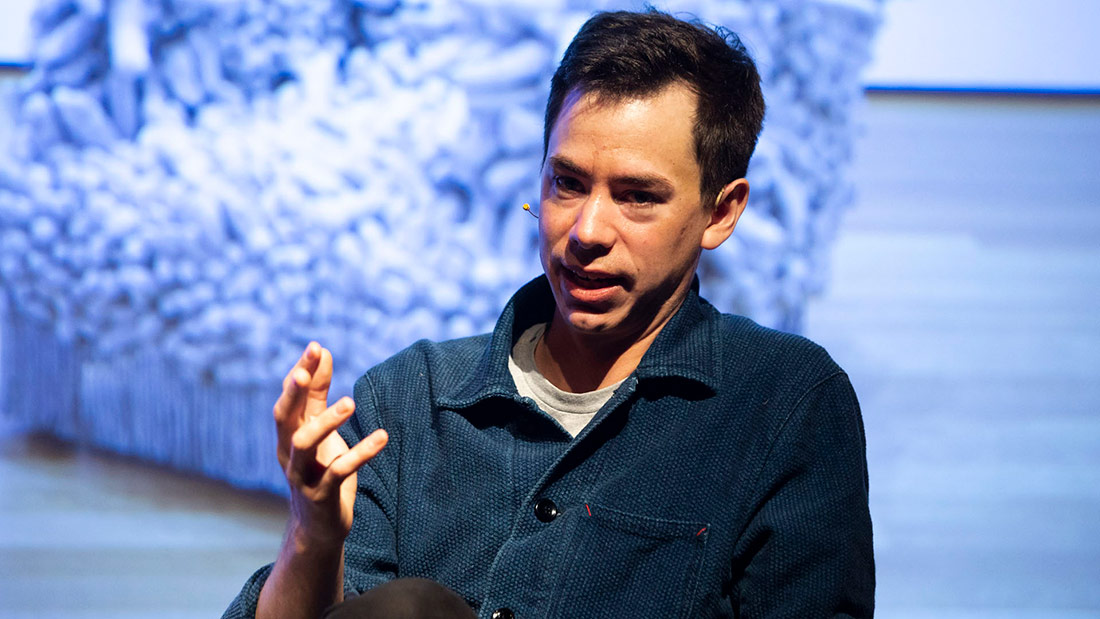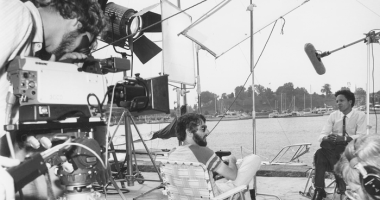Minimalism is a trend. But this aesthetic current, which encourages people to have and need less, has been swallowed up by the logic of capitalism and used to homogenise aesthetic trends across the board. Kyle Chayka, who writes for The New Yorker, reflects on this process while inviting us to stop and pay attention to the world around us.
Kyle Chayka is a digital columnist who writes about the internet and the current complexity of digital environments, and who contributes his articles to leading publications including The New Yorker. Why do some things go viral? Where do memes come from? Where do global trends start?
In this process of digital archaeology, Chayka has focused on one of the elements that is common to various aesthetic trends – minimalism. It features in the content we consume on social media, in the most popular cultural spaces, on platforms, in Airbnbs, in coffee shops, even in our own homes. The thesis of his book The Longing for Less (Bloomsbury, 2020) is hidden among a heap of personal experiences mixed with a lot of information about the history of art, where he explains why minimalism has become a commodity.
Chayka argues that minimalism is about living a simpler life, having less things, needing less things, and being able to pay attention to and appreciate what is in front of us. It’s an idea on how to simplify and cut back our needs and be aware of ourselves and our surroundings.
As always, capitalism has swallowed up the concept, and now you can buy minimalist beauty products, minimalist lights, minimalist houses, minimalist furniture and watch minimalist series. A concept born in the field of contemporary art has become just another marketing hashtag, reaching such paradoxical heights as inviting you to buy an object in order to live a life without so many objects. Buy more to have less.
Minimalism has been decontextualised, it has become an excuse to promote an aesthetic monoculture which unifies trends around the world and means that you can walk into a café or an apartment and not know whether you are in New York, Prague or Seville. It’s the standard trend of gentrification, a false neutrality by design. According to Chayka, the West has adopted a sugar-coated, naïve version of minimalism where what we wish for is apparently to unburden ourselves of the physical world in order to focus on the digital world. For a reality consisting of pleasant decor, a neutral backdrop but with comfortable touches where we can express ourselves, stand out, connect to the wifi and enjoy our screen-time – a kind of projection of the millennial generation’s ideal state.
The aesthetic of minimalism has swallowed up the original idea, and instead of helping us to connect more with things, with reality, and to reflect on our relationship with our environment, this corporate minimalism promotes homogenisation, consumption and isolation.
Chayka calls these homogenised spaces ‘Airspace’, a sterile aesthetic spread around the world by Silicon Valley platforms. But it doesn’t consist of large multinationals offering their aesthetic to all their branches or stores around the world, but rather thousands of coffee shop owners around the world deciding off their own bat to adopt the same fake artisan aesthetic. The digital platforms have ended up producing a worldwide “harmonisation of tastes”, so that when you travel, you always come back to the same place. So that all city centres look the same. According to Chayka, Airspace is the coffee shops, bars, offices and coworking centres that have the same distinctive elements everywhere – minimalist furniture, avocado toast and craft beer. Reclaimed wood. Industrial lighting and a good internet connection.
It’s an aesthetic globalisation driven from an American point of view, with implicit values in its infrastructure. Social networks have allowed the connection of billions of people around the world, but also the propagation and unification of corporate aesthetic criteria. All of a sudden, we all have the same cultural and aesthetic reference points. It’s true that Hollywood exercised a cultural hegemony during the second half of the 20th century, but Silicon Valley is now the focal point of this new hegemony, which has driven everything from aesthetic unification to the spread of disinformation. Regardless of whether or not we are connected, social media affect our environment, our neighbourhood, what shops and restaurants we have nearby. It’s as if, in essence, the physical world were simply a surface, an interface with the digital world.
But how can we survive in a homogenised, accelerated and decontextualised environment, where being proactive and keeping our curiosity and critical spirit alive requires more and more effort, where algorithms mix up information, disinformation and sponsored content in a single place? For Chayka, the internet needs context, we need to regain our initiative, instead of allowing ourselves to be led along by the algorithm-controlled feeds of Netflix, Instagram or any other popular platform; we need to generate new spaces for deep discovery, new platforms or projects that are focused on verified niche information. We have to stop being passive consumers of content, hold onto our critical spirit and demand platforms where content can be consumed in a way that is more personalised, where the feed recommended by the algorithm is only one of the options for accessing information.

Nowadays we mix together leisure, work, information and disinformation in the same thread on accelerated digital platforms, where polarised content generates more impact than substantive content, and where we only care about the immediate present. A book from 10 years ago may be very interesting, but on the internet a text from a few days ago is often considered obsolete.
What’s more, we have to accept that on the web, video content has progressively been gaining ground over written content. Reading is an active process that requires an effort to understand. Images, on the other hand, convey their meaning immediately. As the structure of the internet has improved, it has become ever more visual and more effective, allowing a more passive type of consumption, as it requires less attention to watch a video than to read an article. Historically, the internet has been a very good space for the written word, one where humanity has been able to express itself more than ever and where spaces and projects have been created for all kinds of interests and communities. For Chayka, this progressive shift towards the use of visual narratives and the growth of podcast-type audio content over the classic written article need not necessarily be a bad thing.
Chayka sees it as a new, differentiated information ecosystem, with a new range of opportunities to provide context and educate people. If you want, a one-minute Tik Tok video could be simply banal or a very powerful communication tool, depending on how you use it. The challenge is how to offer quality content packaged in an environment where banality rules the day. How to continue nourishing people’s spirit and curiosity in environments specially designed to enhance our passivity.
This is why Chayka writes about minimalism, to defend a type of relationship with the reality that surrounds us. The art, music, architecture and philosophy he describes in his book are not concerned with a particular aesthetic. They try to find unmediated experiences, to pay attention to what surrounds us without putting up barriers, and to accept ambiguity, understanding that opposites can form part of a whole. For Chayka, minimalism does not offer answers, much less a guide or a manual, rather it proposes another way of living that can be extended into the future beyond the lifespan of a simple trend, and these are principles that are still valid, despite the capitalist appropriation and trivialisation of minimalism by large corporations.




Laura | 01 April 2022
Bom ler um texto interessante! Grata pelo conteúdo de qualidade!
Leave a comment